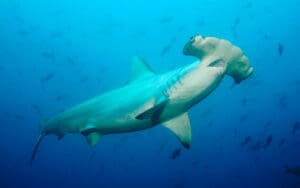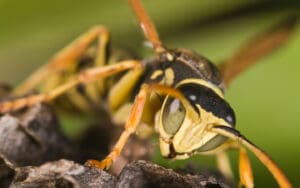Humans may have an advantage when it comes to brains. But animals also have their own supra-human superpowers that give them unique advantages that we can only duplicate through advanced technology. Here are five incredible senses that animals have and humans don’t.

5 Senses Animals Have That Humans Don’t
Humans are limited to five senses: Sight, smell, taste, touch, and hearing. Although humans have excellent sight and a wide range of hearing, lots of animals surpass our abilities with those particular senses.
However, some animals have senses that humans do not possess, which allow them detection abilities that are completely beyond our grasp. Here are 5 incredible senses animals have that humans don’t.
1. Magnetoreception
Magnetoreception is exactly what it sounds like, and the ability to detect Earth’s magnetic field.
Organisms with magnetoreception can:
- Perceive direction, altitude, and location
- Determine their spatial orientation
- Navigate short- and long-range
- Return to their nesting sites with extreme accuracy
- Guide themselves offshore into deeper waters
Surprisingly, many species of the animal kingdom have this ability, including fish, mammals, birds, amphibians, reptiles, insects, mollusks, and arthropods.
Examples include fruit flies, mole rats, lobsters, sea turtles, dogs, and birds.
2. Echolocation
Echolocation in animals, also called biosonar, is a type of biological sonar that animals use in determining the location of objects through reflected sound. The animals emit soundwaves that bounce off the objects around them. They then use these echoes to locate and identify the objects.
Animals with echolocation can use it to:
- Navigate
- Hunt
- Identify friends and enemies
- Avoid obstacles
Some of the most well-studied animals that use echolocation are bats, dolphins, bottlenose dolphins, toothed whales, killer whales, sperm whales, shrews, oilbirds, and soft-furred tree mice.
3. Electroreception
Electroreception is the ability to detect weak electrical stimuli in an environment. It is almost exclusively observed in aquatic or amphibious animals.
Organisms with electroreception can detect electrostatic fields.
Some of the most studied species known to have electroreception are Monotremes, egg-laying mammals that include platypus; Teleosts, a group of ray-finned fishes, such as electric eels; and cartilaginous fish, such as rays, dolphins, and sharks, the latter of which are the most electrically sensitive animals known. A shark could detect two AA batteries being connected from a thousand miles away. Roaches and bees also can detect electric fields.
4. Infrared Vision
Infrared vision is the ability of certain organisms to see fields of light that the human eye can’t. That’s because Infrared has longer wavelengths and emits lower energy.
While humans cannot see infrared, they typically detect it in the form of heat, as in seeing heat rays radiating off of asphalt.
Only cold-blooded animals can see infrared light including mosquitoes and other blood-sucking insects, bedbugs, some species of snakes and pit vipers, vampire bats, salmon, bullfrogs, and some species of beetles.
5. Polarized Light Vision
Polarized Light Vision is the ability of animals to detect the oscillation plane of the electric field vector of light (E-vector).
Humans need to wear special polarized sunglasses to block out glare, while animals that possess specialized photoreceptors can use this to their advantage. This ability allows animals who possess polarized light vision to detect otherwise hidden patterns and/or camouflage, as well as gain advantages with navigation, communication, and hunting.
Polarized Light Vision is widespread across animals, but is particularly pronounced within invertebrates, especially arthropods. Animals with the ability to detect polarized light include certain fish, including cuttlefish which have a greater ability than any other animal, as well as honeybees, ants, crickets, the greater mouse-eared bat, mantis shrimp, and cephalopods.









